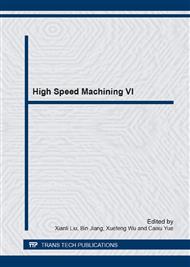p.649
p.654
p.660
p.666
p.672
p.678
p.684
p.688
p.693
Double Helical Synchronous Belt Transmission Design
Abstract:
The meshing impact noise caused by the gradually engagement between double helical synchronous belt and the pulley was reduced due to its spiral angle effect. Therefore, double helical synchronous belt transmission receives much concern with its excellent characteristics of de-noising, low transmission error and high carrying capacity. The profiles of synchronous belt and belt pulley were studied based on conjugate-curvature high degree contact meshing theory under the circumstance that the pitch of belt and belt pulley are identical. The higher contact strength of the belt teeth and a smaller clearance in the contact point adjacent area were ensured with Hertz contact theory as the synchronous belt is in contact with pulley. And then a conjugated arc tooth profile with two-step contact and three-step adjacent gap infinitesimal was proposed based on the simple easy to processing method, which was adopted as main parameters for double synchronous belt and pulley’s normal teeth profile. The three-dimensional transmission model was built and the static nonlinear contact analysis was done with finite element software ANSYS. Finally, the noise experiment was conducted on the high speed test bench to compare the noise reduction effect between double helical synchronous belt and straight tooth timing belt with the identical end face profile. The simulation and experiment result show that the double helical synchronous belt transmission can reduce noise level by 11dB approximately compared with straight tooth timing belt transmission.
Info:
Periodical:
Pages:
672-677
Citation:
Online since:
July 2014
Authors:
Price:
Сopyright:
© 2014 Trans Tech Publications Ltd. All Rights Reserved
Share:
Citation:


